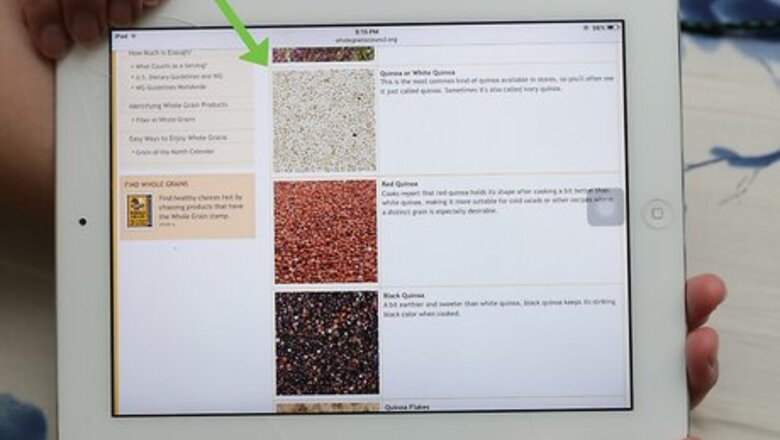
views
X
Research source
Although commonly cooked like a grain, quinoa is incredibly nutrient-rich; it is remarkably high in its protein (8 grams per cup), iron, magnesium, folate, omega-3 fatty acids and potassium, and carries a low glycemic index, making it a perfect choice for diabetic considerations. With a light crunch and pleasantly nutty flavour, it's little wonder quinoa has become such a popular superfood. Whether for the sake of health or purely for taste's sake, there are countless ways you can effectively integrate quinoa into new or existing recipes. It also makes a great replacement for pasta, rice, and couscous if you follow a gluten-free diet. As with many grains, adding great taste to quinoa can be fast and simple; the trick lies in knowing how to best extract and complement its complex, nutty flavour.
Getting Started with Quinoa

Know your quinoa. There are plenty of particular strands of quinoa available, and the choices you make at the supermarket will have a significant impact on the way your recipe tastes. Normally, when people mention quinoa, they are referring to the white, plain variety. Consequently, plain quinoa is the most versatile and dependable type out there. If you haven't had much experience cooking with quinoa before, it is recommended you start out with white quinoa. It's also the fastest cooking-- between ten and fifteen minutes. Red quinoa holds its shape after cooking, so it's the best choice for salads. Its colour and vibrancy create a perfect bed for vegetables or proteins, like meat and legumes. . Red quinoa takes a little longer to cook-- around twelve to seventeen minutes. Black quinoa is slightly sweeter and earthier than its plain counterpart. Its striking colour makes it the recommended choice if you're wanting your recipe to be visually (as well as flavourfully) memorable. However, black quinoa takes the longest time to cook in the pot-- between thirteen and eighteen minutes.

Rinse your quinoa. After you've decided what type of quinoa you want to use, it is important to give the seeds a proper rinse. Quinoa grows with a protective coating called saponin that tastes bitter when not rinsed off properly. Place the quinoa in a fine-meshed sieve and run cold water through it, making sure the water hits to every morsel. Although most storebought quinoa is already pre-rinsed, it's recommended you give it a good once-over yourself. It doesn't need to be anything drastic; a two minute rinse is more than enough to get most, if not all of the bitterness away from your quinoa.
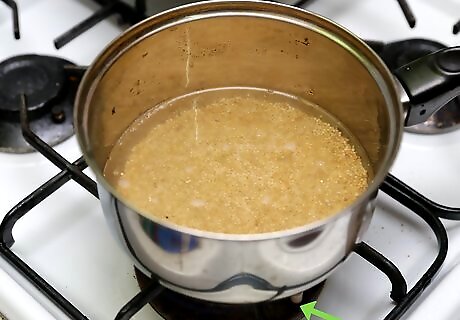
Cook basic quinoa. Before moving onto adding taste and zest to your quinoa, it is important to note how to prepare it. To prepare the quinoa for your recipe, add a cup and a half of water to a pot for each cup of grain you'll be using. Wait until the water begins to boil, then lower the heat to a simmer. Add the quinoa, and wait for the given amount of time listed in the examples above. Following that, you will have a supply of quinoa to use in virtually any dish. Return the quinoa to the pan and let it rest for about fifteen minutes before using it in a recipe. It will dry out a bit and your quinoa will be light and fluffy, not soggy and clumped. Rather than a pot, you can cook quinoa using a rice maker. Although their appearance may vary, the manner in which they cook is quite similar, and using a rice maker may alleviate some of the workload for you. Keep in mind, however, that quinoa (10-20 minutes) takes considerably less time to cook than rice (40 minutes); that fact should be considered if using anything conventionally used for making rice. For an alternative preliminary cooking method, you can put the quinoa in a skillet with a bit of oil (canola, olive, or sesame) over low to medium heat. Stir constantly for six to eight minutes, watching to make sure it does not burn. Putting the quinoa over heat will help to bring out the natural nutty flavour before you add it to your recipe. If you're strapped for time and looking for something really simple, quinoa tends to be significantly better tasting left plain than a lot of other grains. Adding some salt and pepper to plain quinoa can be an enjoyable, if somewhat Spartan meal.
Soaking Flavour into Quinoa
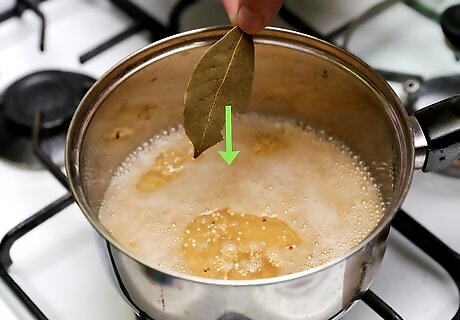
Add spices and herbs to your quinoa while it’s cooking. Quinoa will absorb the flavours around it. Once you've rinsed and prepped your quinoa, the most straightforward and commonplace manner of adding flavour to it is via adding spices, as you would a conventional grain like rice. A bay leaf, smashed garlic clove, a pinch of salt, a bit of black pepper-- all are tried-and-tested spices to combine with quinoa. Create a spice satchel if you just desire the fragrance in your quinoa. This can be accomplished by placing your herbs into a small square of cheesecloth. Tie the cheesecloth closed with a bit of kitchen twine. Add the satchel directly to the water before the quinoa is added. Let it cook with the quinoa, then remove it after the quinoa is cooked.
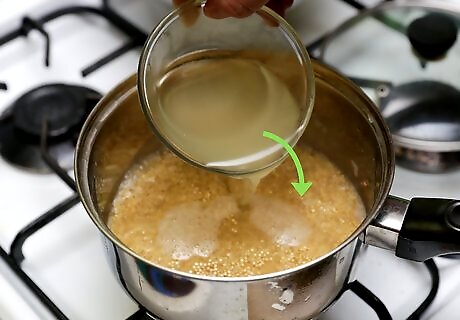
Cook quinoa in broth instead of water. Because of quinoa's ability to soak up flavours and liquids so effectively, cooking it in a flavoured broth is a quick and easy way to make the morsels flavourful. Experimenting with different kinds of stock will yield different flavours; it's recommended you try at least a couple to get some impression of this seed's versatility. A vegetable stock (like mushroom) or chicken stock will give it a mild flavor. Beef stock or seafood stock will give it the most distinct flavor. To tone the flavor down, use half water and half stock. Choose low-sodium broth options for a healthier option. They will still bring a lot of flavor to your dish. To get more flavor, use bouillon cubes-- keep in mind, however, that bouillon cubes will notably increase the sodium content.
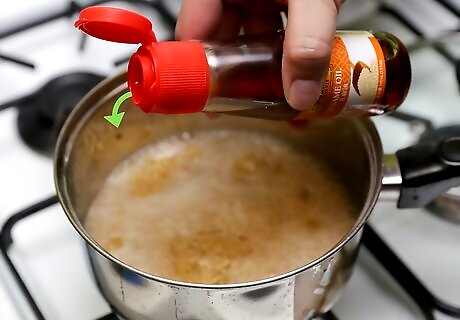
Apply an oil to the quinoa as it begins to cook. Sesame seed oil, coconut oil, or walnut oil will give a subtle nuance to the flavour of your quinoa. Adding a tablespoon of oil per cup of quinoa is recommended if you are cooking the quinoa via saucepan.
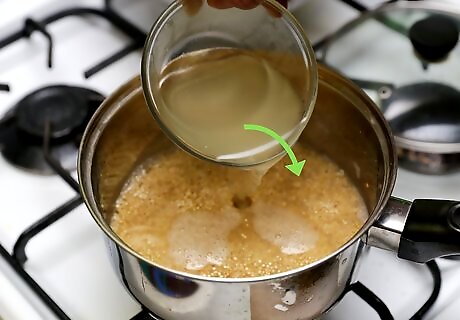
Add sauce to quinoa. As with a great many other dishes, sauce is a powerful way to inject some flavour into your meal. There are countless sauces to chose from, and considering how malleable quinoa is tastewise, a chosen sauce will likely have the greatest determinant effect on the dish. If you're looking for potential scenarios to combine sauce and quinoa in, think of other grains you regularly sauce. Even pasta may be reasonably substituted with quinoa. While you may want to try simmering a basic tomato sauce alongside your quinoa to start, the possibilities are virtually endless. Try searching online for a few basic recipes; with the upsurge of quinoa's recent popularity, there are plenty of cooking blogs that are more than willing to take the guesswork out of your equation.
Complementing Quinoa With Other Ingredients
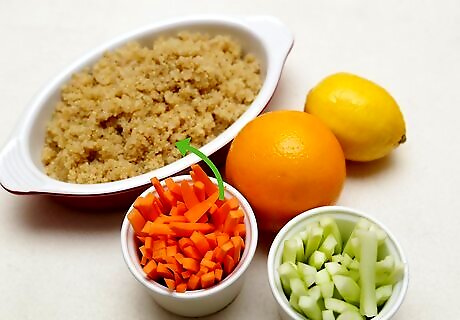
Add fruits and vegetables to your quinoa. While quinoa will effectively soak up the flavours around it, its natural taste may go together very well with other ingredients. Throwing in seasonal fruits and vegetables to your quinoa will make a delicious meal. In particular, quinoa goes well with citrus and apples to create sweet and light dishes. It is also complementary with leafy greens and less starchy vegetables. Experiment to find what you like. Add lime and orange juice with their accompanying zest to serve with seafood. Add tomato, avocado, and lime for a southwest flavor. Add squash, peppers, and corn for a delicious succotash. Try mustard greens and garlic if you feel like spicing it up a bit.
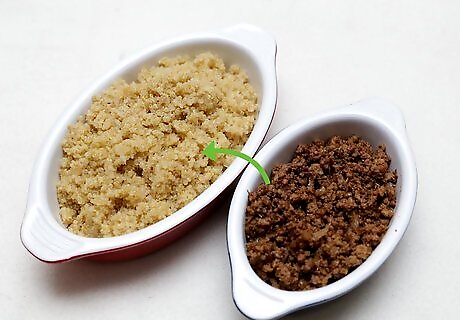
Combine meat and quinoa for a rich and hearty dish. As beef tends to be quite juicy, it is the recommended standard in this case. In particular, ground meat complements a quinoa dish; the smaller the meat chunks, the more surface area the meat offers to disperse its flavour amidst the grains, and having the meat at a similar size to the grains will offer a much more balanced consistency, allowing the ingredients to proportion themselves evenly with each bite.
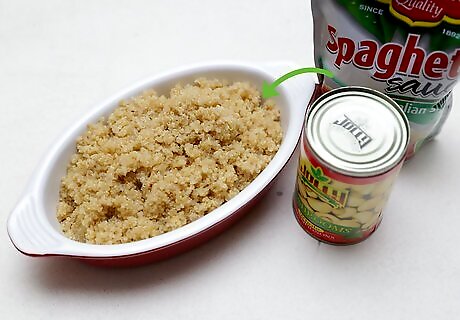
Use quinoa in any place you’d use lentils, corn, millet, rice, or pasta. You will enjoy a much healthier and nutritious dish. Try using quinoa in place of tortillas when you make enchiladas next! Although the cooking instructions for quinoa may vary from the ingredient it is replacing, you'll find quinoa adapts to these dishes quite well, and in some cases, may even surpass the original for taste as well as nutrition's sake! For example: Try making quinoa like you would a risotto. Sauté a chopped onion in olive oil. Add your rinsed quinoa to the pan until it is coated with oil. Add warm liquid a bit at a time, stirring frequently, until it is creamy, cooked through, and delicious.This is especially delicious with a seafood added.
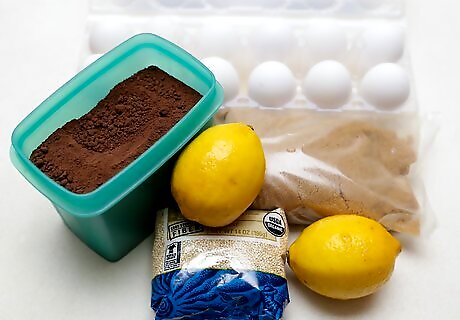
Bake a recipe with quinoa. In the case of baking, quinoa is perfectly suited to replacing other ingredients you would otherwise use as a primary base, like white flour. From healthy breakfast bars to chocolate cookies to donuts, there are many recipes available to try. Adding or substituting quinoa will make the recipe delicious and far more nutritious. Quinoa, like other grains, can be ground into a fine flour. Quinoa flour has a bit of a sour odour that works great in bread and English muffin recipes. But don’t be afraid to try it in pastries, especially in tandem with other gluten-free flours. The protein in the flour will help give your dough more structure and rise.
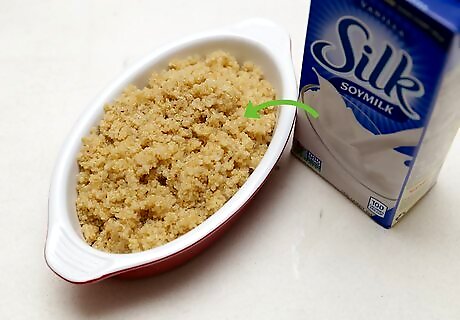
Try quinoa flakes. An important side to adding flavour to quinoa is exploring the ways it can replace other ingredients. Quinoa flakes are a fine alternative to rolled oats, and serve to add more protein to your oat-based breakfasts, snacks and desserts. Just as you would with morning oatmeal, adding syrup or berries can make for a quick, delicious breakfast. They make great hot cereal, but they are a great addition to waffles, pancakes, granolas, and cookies.




















Comments
0 comment